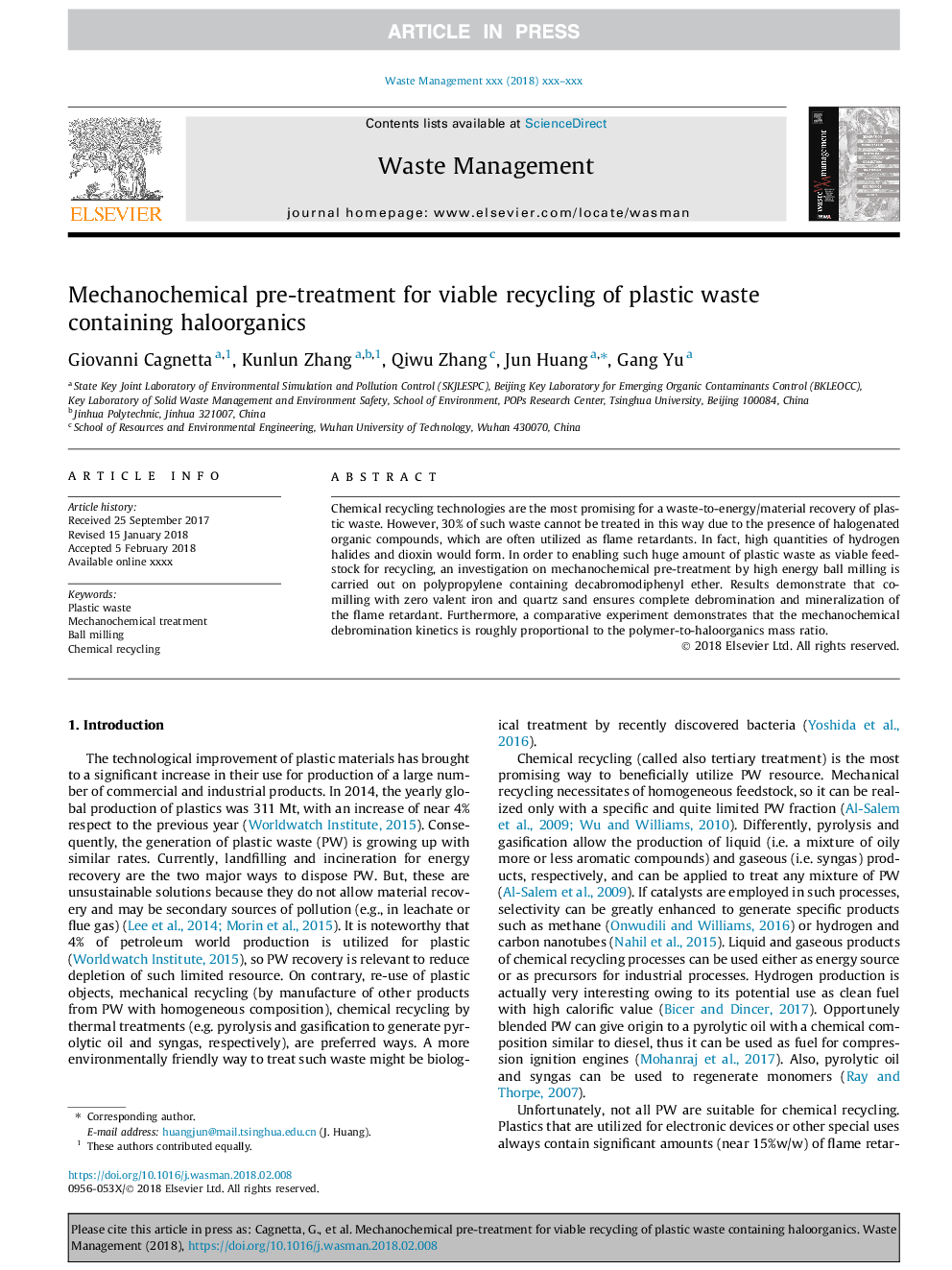| Article ID | Journal | Published Year | Pages | File Type |
|---|---|---|---|---|
| 8869816 | Waste Management | 2018 | 6 Pages |
Abstract
Chemical recycling technologies are the most promising for a waste-to-energy/material recovery of plastic waste. However, 30% of such waste cannot be treated in this way due to the presence of halogenated organic compounds, which are often utilized as flame retardants. In fact, high quantities of hydrogen halides and dioxin would form. In order to enabling such huge amount of plastic waste as viable feedstock for recycling, an investigation on mechanochemical pre-treatment by high energy ball milling is carried out on polypropylene containing decabromodiphenyl ether. Results demonstrate that co-milling with zero valent iron and quartz sand ensures complete debromination and mineralization of the flame retardant. Furthermore, a comparative experiment demonstrates that the mechanochemical debromination kinetics is roughly proportional to the polymer-to-haloorganics mass ratio.
Related Topics
Physical Sciences and Engineering
Earth and Planetary Sciences
Geotechnical Engineering and Engineering Geology
Authors
Giovanni Cagnetta, Kunlun Zhang, Qiwu Zhang, Jun Huang, Gang Yu,
